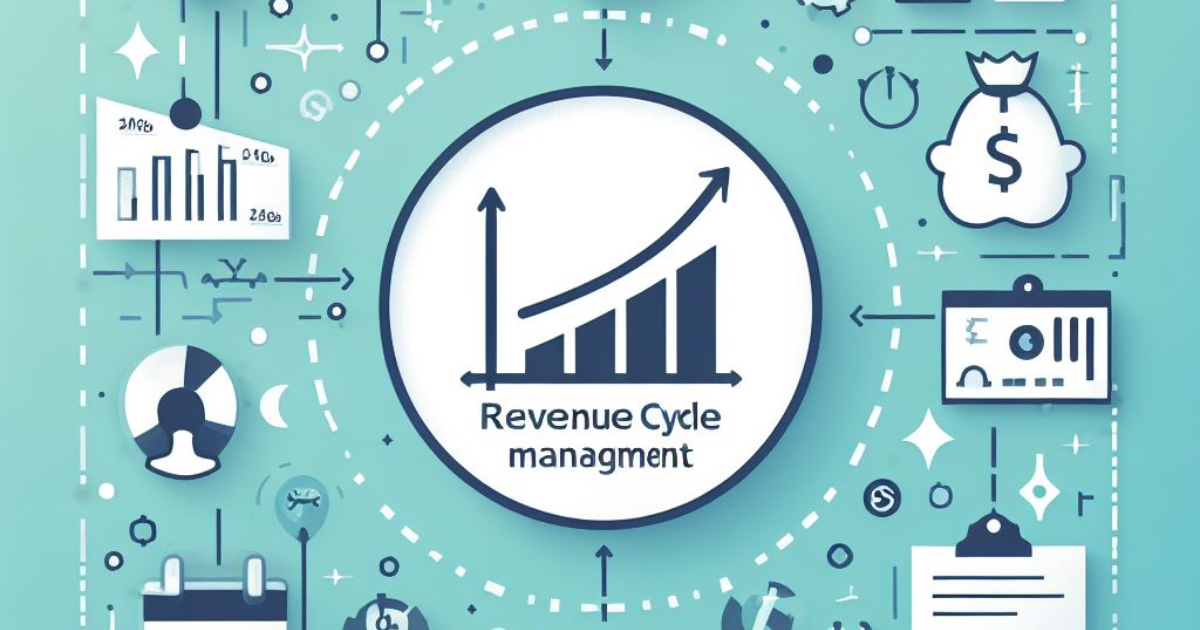Sharing is caring!

In today’s rapidly evolving healthcare industry, optimizing revenue cycle management has become crucial for organizations to achieve streamlined success. By implementing key strategies and tactics, healthcare providers can effectively streamline their revenue cycle management processes, ensuring financial stability and improved patient care. This article explores the essential techniques and approaches that can help healthcare organizations enhance their revenue cycle management, ultimately leading to increased efficiency and profitability.
1. Crucial Tactics for Optimizing Revenue Cycle Management
Optimizing revenue cycle management is essential for businesses to improve their financial performance. This involves implementing strategies such as automating processes, reducing billing errors, and improving collections. By streamlining the revenue cycle, businesses can enhance cash flow, reduce costs, and increase overall profitability.
2. Streamlining Revenue Cycle Management for Success
Streamlining revenue cycle management involves simplifying and improving the various steps involved in generating revenue, from patient registration to claim submission and payment collection. This can be achieved by implementing efficient software systems, training staff on best practices, and regularly analyzing and optimizing processes. A streamlined revenue cycle management process can lead to faster payments, reduced denials, and improved patient satisfaction.
3. The Importance of Revenue Cycle Management Optimization for Businesses
Revenue cycle management optimization is crucial for businesses as it directly impacts their financial health. By optimizing revenue cycle management, businesses can reduce billing errors, improve cash flow, and increase revenue collection. This enables them to better manage expenses, invest in growth opportunities, and ultimately achieve long-term success.
4. Key Strategies for Streamlining Revenue Cycle Management
Streamlining revenue cycle management involves implementing several key strategies. This includes standardizing processes, leveraging technology solutions, and improving communication and collaboration between departments. Additionally, regularly monitoring and analyzing key performance indicators can help identify areas for improvement and guide decision-making.
5. Achieving Success through Revenue Cycle Management
Success in revenue cycle management is achieved by effectively managing the entire revenue cycle, from patient registration to final payment collection. This involves optimizing each step of the process, ensuring accurate coding and billing, minimizing denials and rejections, and maximizing collections. By achieving success in revenue cycle management, businesses can improve financial stability and position themselves for future growth.
6. The Benefits of Implementing Streamlined Revenue Cycle Management
Implementing streamlined revenue cycle management offers several benefits for businesses. These include improved cash flow, reduced billing errors, increased collections, and enhanced patient satisfaction. Additionally, a streamlined revenue cycle management process enables businesses to better track and analyze financial performance, identify trends, and make informed decisions.
7. Challenges in Optimizing Revenue Cycle Management
Optimizing revenue cycle management can be challenging due to various factors such as complex billing regulations, changing reimbursement models, and evolving technology. Additionally, managing staff training and ensuring consistent adherence to best practices can also pose challenges. Overcoming these challenges requires a proactive approach, continuous education, and leveraging technology solutions to automate and streamline processes.
8. Leveraging Technology to Streamline Revenue Cycle Management
Technology plays a vital role in streamlining revenue cycle management. Implementing electronic health records (EHR) systems, revenue cycle management software, and automated billing and coding tools can significantly improve efficiency and accuracy. Additionally, leveraging data analytics and reporting capabilities can provide valuable insights for optimizing revenue cycle management processes.
9. The Role of Data Analysis in Optimizing Revenue Cycle Management
Data analysis is crucial for optimizing revenue cycle management. By analyzing key performance indicators, such as days in accounts receivable, denial rates, and collection rates, businesses can identify trends, pinpoint areas for improvement, and make data-driven decisions. This enables them to optimize processes, reduce costs, and increase revenue collection.
10. Improving Revenue Cycle Management Efficiency in Healthcare Organizations
Healthcare organizations face unique challenges in revenue cycle management due to complex billing and reimbursement processes. Improving efficiency in revenue cycle management requires implementing technology solutions, ensuring accurate coding and documentation, and optimizing patient registration and scheduling processes. By doing so, healthcare organizations can improve financial performance and provide better patient care.
11. Best Practices for Successful Revenue Cycle Management
Successful revenue cycle management involves implementing best practices such as standardizing processes, training staff on coding and billing guidelines, regularly monitoring and analyzing key performance indicators, and maintaining open communication between departments. Additionally, staying updated with industry regulations and trends is essential for successful revenue cycle management.
12. Aligning Revenue Cycle Management with Financial Goals
Aligning revenue cycle management with financial goals involves setting clear objectives, tracking key performance indicators, and regularly evaluating performance against targets. By aligning revenue cycle management with financial goals, businesses can ensure that their revenue generation processes are contributing to overall financial success.
13. Pitfalls to Avoid in Revenue Cycle Management Optimization
When optimizing revenue cycle management, it is important to avoid common pitfalls such as neglecting staff training and education, failing to regularly analyze performance metrics, and not adapting to industry changes and regulations. Additionally, overlooking the importance of patient satisfaction and experience can also hinder revenue cycle management optimization efforts.
14. Staff Training and Education for Streamlined Revenue Cycle Management
Staff training and education are crucial for streamlining revenue cycle management. Ensuring that staff members are well-versed in coding and billing guidelines, proficient in using technology solutions, and knowledgeable about industry regulations can significantly improve efficiency and accuracy. Continuous education and training programs should be implemented to keep staff updated with the latest practices and trends.
15. Emerging Trends and Innovations in Revenue Cycle Management Optimization.
Revenue cycle management optimization is continuously evolving due to emerging trends and innovations. These include the use of artificial intelligence and machine learning in automating processes, the adoption of blockchain technology for secure data exchange, and the integration of telehealth services into revenue cycle management workflows. Staying informed about these emerging trends can help businesses stay ahead of the curve and optimize their revenue cycle management processes.
In conclusion, optimizing revenue cycle management is crucial for businesses to achieve streamlined success. By implementing tactics such as automating processes, reducing errors, and improving collections, businesses can enhance cash flow, reduce costs, and increase profitability. Streamlining revenue cycle management involves standardizing processes, leveraging technology solutions, and improving communication between departments. By aligning revenue cycle management with financial goals and staying informed about emerging trends and innovations, businesses can effectively manage their revenue generation processes and position themselves for long-term success.





